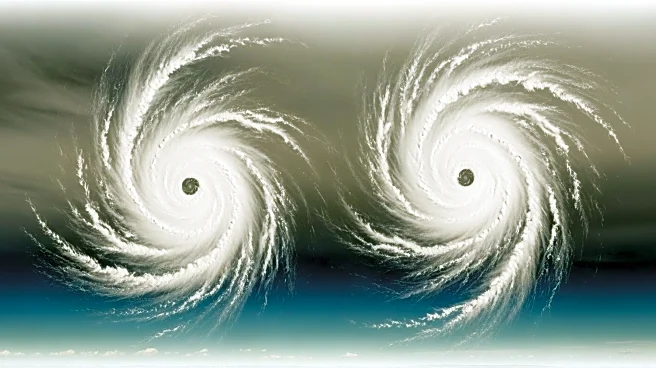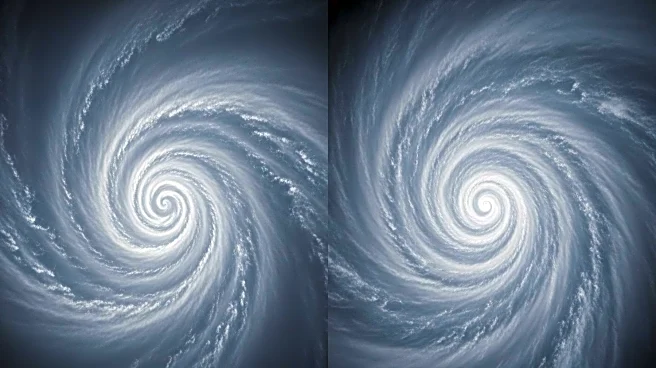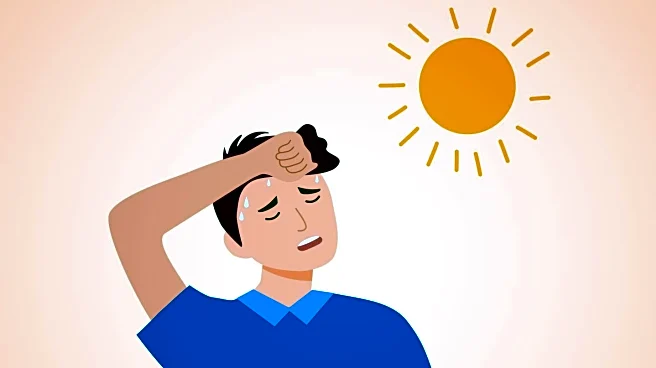What's Happening?
The Fujiwhara effect is a meteorological phenomenon that occurs when two nearby tropical cyclones or low-pressure systems begin to rotate around a common center. This interaction can lead to various outcomes, such as the storms orbiting each other, merging into a single system, or one storm absorbing the other. The effect is named after Japanese meteorologist Sakuhei Fujiwhara, who first described it in 1921. Factors influencing the Fujiwhara effect include the distance between the systems, their relative intensity, and atmospheric conditions.
Why It's Important?
Understanding the Fujiwhara effect is crucial for accurate weather forecasting and predicting the behavior of tropical cyclones. The interaction between storms can alter their paths and intensities, potentially leading to unexpected impacts on affected regions. Accurate predictions can help mitigate risks and improve preparedness for communities in hurricane-prone areas.
What's Next?
Meteorologists will continue to study the Fujiwhara effect to refine forecasting models and improve predictions of storm interactions. This research could lead to better understanding of the dynamics of tropical cyclones and enhance the accuracy of weather forecasts, ultimately benefiting public safety and disaster response efforts.
Beyond the Headlines
The study of the Fujiwhara effect highlights the complexities of atmospheric interactions and the challenges of predicting weather patterns. It underscores the importance of ongoing research and technological advancements in meteorology to improve forecasting accuracy and disaster preparedness.











